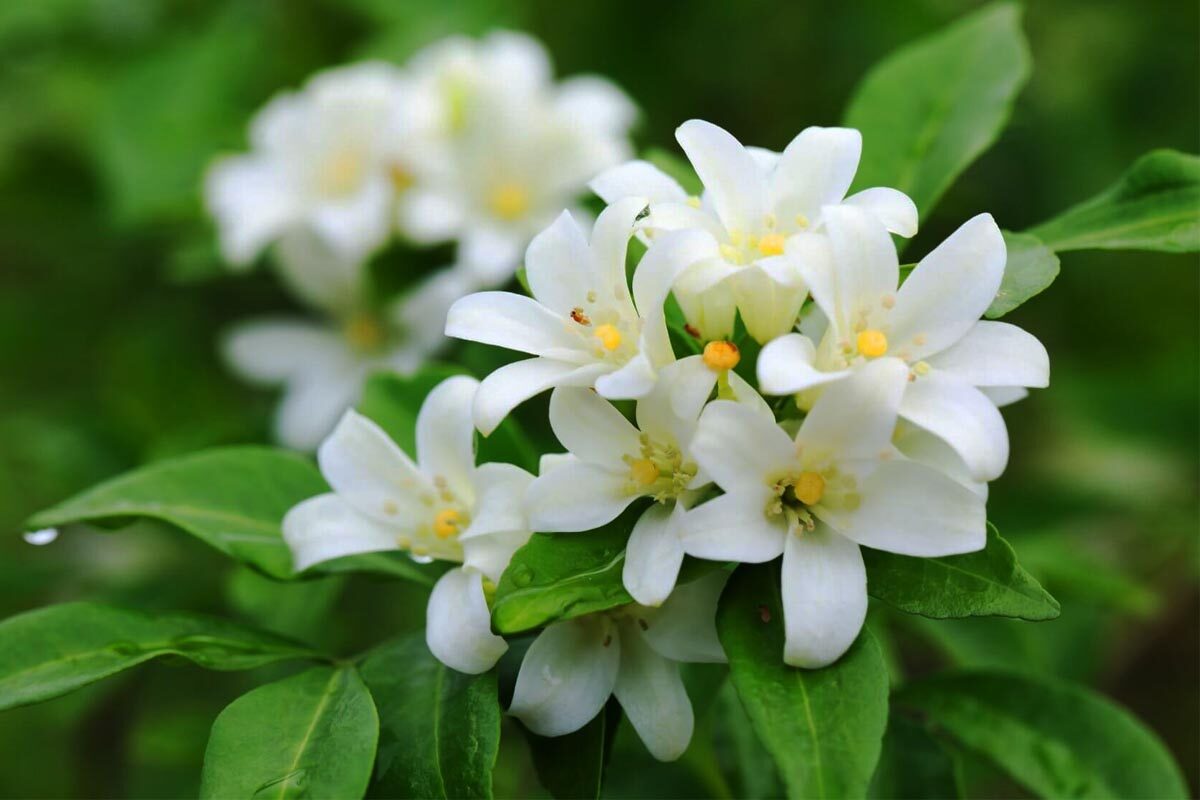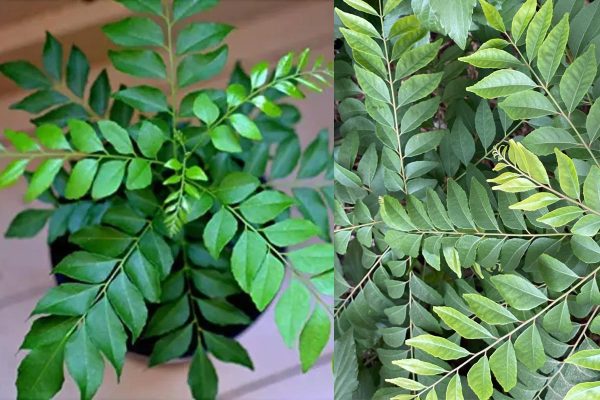Plants
Jasmine
Introduction / परिचय
Jasmine flower gives very little fragrance during the day. But as the night begins to fall. Its fragrance starts spreading. It is very popular among the people due to its fragrance. When the buds start to bloom on the jasmine plant. So its fragrance is very strong. As the buds start turning into flowers, so does its aroma.
Apart from India, jasmine flower is considered very popular in many other countries, this flower is also called the flower of the queen of the night in India. The biggest reason for this is its aroma and benefits of jasmine. An enchanting fragrance emanates from inside this flower. Which makes the whole environment around us pleasant by smelling completely.
Jasmine oil is extracted from the flowers of some advanced species of jasmine flower. In which the main species include Jasminum officinale, L. Jasminum grandiflorum. At present, about 40 species and 100 varieties of this flower are found naturally inside India. The right time to plant jasmine plant is from June to November.
| English Name: | Jasmine |
| Hindi Name: | चमेली (Chameli ) |
| Scientific Name: | Jasminum |
| Family: | Oleaceae |
| Kingdom: | Plantae |
| Light : | Full sun to Partial Shade |
| Height: | 10 to 15 ft. |
| Flower Color : | White, Pink and Yellow |
| Leaves Color : | Green |
| Eason Features : |
Also Read This : World’s Most Weird Plants, Trees and Flowers
Varieties / किस्मे
There are more than 200 species of jasmine plant around the world, most of these jasmine species are white and some others are pink and yellow in color. Some varieties can be grown indoors, as ground covers, climbers, walls and trellises.
| S No. | Name | Botanical Name |
| 1 | Common Jasmine | Jasminum officinale |
| 2 | Royal Jasmine | Jasminum grandiflorum |
| 3 | Winter Jasmine | Jasminum nudiflorum |
| 4 | Arabian Jasmine | Jasminum sambac |
| 5 | Dwarf Jasmine | Jasminum parkeri |
| 6 | Wild Jasmine | Jasminum fruticans |
| 7 | Pink Jasmine | Jasminum polyanthum |
| 8 | Forest Jasmine | Jasminium abyssinicum |
| 9 | Lemon-Scented Jasmine | Jasminum azoricum |
| 10 | Italian Jasmine | Jasminum humile |
| 11 | Downy Jasmine | Jasminum pubescens |
| 12 | Jasminum Vahl | Jasminum auriculatum |
| 13 | Coral Jasmine | Nyctanthes arbortristis |
| 14 | Cape Jasmine | Gardenia jasminoides |
| 15 | Night Blooming Jasmine | Cestrum nocturnum |
| 16 | Star Jasmine | Trachelospermum asiaticum |
| 17 | Day Blooming Jasmine | Cestrum diurnum |
Classification of Plants/ पौधों का वर्गीकरण
Both hot and temperate climate is considered right for Jasmine. Apart from this, it can also be cultivated in dry places. It is appropriate to plant jasmine plant during June to November and its plant starts flowering after about six months of planting. This beautiful flower is found in different colors. Jasmine flowers are usually found in white and pink colors. Apart from this, some of its flowers are also of yellow color. One flower often has five or six lobes. This flower is strong and fragrant.
Jasmine flowering shrubs reach a height of about 10 to 15 feet and grow about 12 to 24 inches each year. Jasmine leaves are either evergreen or deciduous. The size of its leaves is normal, about two and a half inches long. The stem of its plant is thin, light green, shiny, and 4-sided. Most of the jasmine species are white in color and the size of its flower is about 1 inch.
In the fall, some of the leaves of the jasmine plant start falling. Its leaves are green in color, whose upper surface is smooth and the lower surface is slightly rough. The length of the leaves is about one to two inches. Like the leaves, its branches are also green and smooth. Jasmine flower is of Mogra and Juhi flower species. The size of jasmine flower is about one inch. If this plant is planted by cutting, then it starts flowering in an interval of about 2 to 3 years.
Also Read This : World Earth Day History, Theme, Facts & Importance
History / इतिहास
The name of this flower was derived from Parsi Words which means "Yasmin". The English name of Jasmine flower is Jasmine Flower. Which means "gift of the Lord". This flower is native to the southern region of the Himalayas. This flower was first grown on the Himalayas in western China. It is grown in all parts of India. Apart from this, this flower is also cultivated in many European countries.
Uses and Benefits / उपयोग एवं फायदे
- Jasmine flower is used in most of the worship work in our country. Apart from this, this flower is also used to make Gajra for women. Some species of jasmine flower are also used to extract its oil. This flower is also used to make Ayurvedic medicine, and it is also beneficial for our health.
- The benefits of eating jasmine flower are many, but it is very important to take care of some things before eating it. Its flowers have a strong smell. These flowers are also used for tea for its smell. A fragrant tea is made from it.
- Many nutrients and antiseptic properties are found in jasmine flower. Because of which, if oil made from its flowers is applied on the scalp and massaged for some time, then it removes dandruff and many problems in the scalp. Its oil should be mixed with coconut oil and applied on the head. After half an hour of applying the oil, the head should be washed. It gets rid of many hair problems.
- Jasmine is also very beneficial for removing body odor.
- You can use lotions or creams made from jasmine from the market.
- Nails, pimples or bruises are formed on many parts of our body. You can use a product made from jasmine to remove these marks.
Also Read This : Areca Palm Plants : Grow, Care and its Benefits
How to Grow Plant / कैसे उगाएं
The jasmine plant is mostly planted by cutting the cuttings. In such a situation, if you plant a jasmine plant by the cutting method, then it is considered the best. Because it has the highest potential to become a pen plant. For this, first cut 5 to 10 cuttings from a good jasmine plant. After preparing all the cuttings, keep them immersed in the solution of rooting hormone powder for five minutes. If you don't have rooting hormone powder, you can also put it in water. After this you have to prepare the soil for applying the pen. In the soil, you can use 30% normal garden soil, and 50% sand, and 20% old manure or vermicompost. After mixing the soil well, you plant it in the soil.
Also Read This : Growing Jasmine: A Comprehensive How-To Guide
How to Take Care/ देखभाल कैसे करे
Jasmine plant needs a lot of sunlight. In summer, you must keep it in the sunlight. This keeps the plant healthy. Do not let the water shortage inside it during the summer. If you want, you can water your plants every day in the summer. The blooming season of jasmine flowers is from February to October. This flower stops blooming in winter. If only leaves come on your plant, and flowers are few. So it could be the reason, that you have kept your plant in a shaded place. If the plant is kept in the sun, it starts flowering in a few days. At the end of winter, that is, in the month of February, it starts flowering, so you should always prune the plant in the middle of December to January, that is, the long branches. They should be cut. The plant should be fertilized. If your jasmine plant is infested with kit moths, then for this you can spray neem oil by mixing it well in water. This keeps the plant healthy. Once a month, you can mix two spoons of urea fertilizer in two to three liters of water and put it around the root of the plant.
Also Read This : Top 10 Benefits of Money Plant and Right Direction to Place it according to Vastu
Interesting Facts / रोचक तथ्य
- Jasmine flower is beautiful and beautiful. Due to its beauty and smell, this flower has got the status of the national flower of Pakistan.
- Jasmine flowers bloom from late February to early October. After this flowering stops on these plants.
- Most people know Mogra flower as Jasmine flower, but it varies according to the species. The botanical name of Jasmine is (Jasminum) and the botanical name of Mogra is (Jasminum Sambac). But their plant is almost the same. Both the flowers are popular for their fragrance.
Also Read This : Pruning Jasmine Plants: Step-by-Step Tutorial




